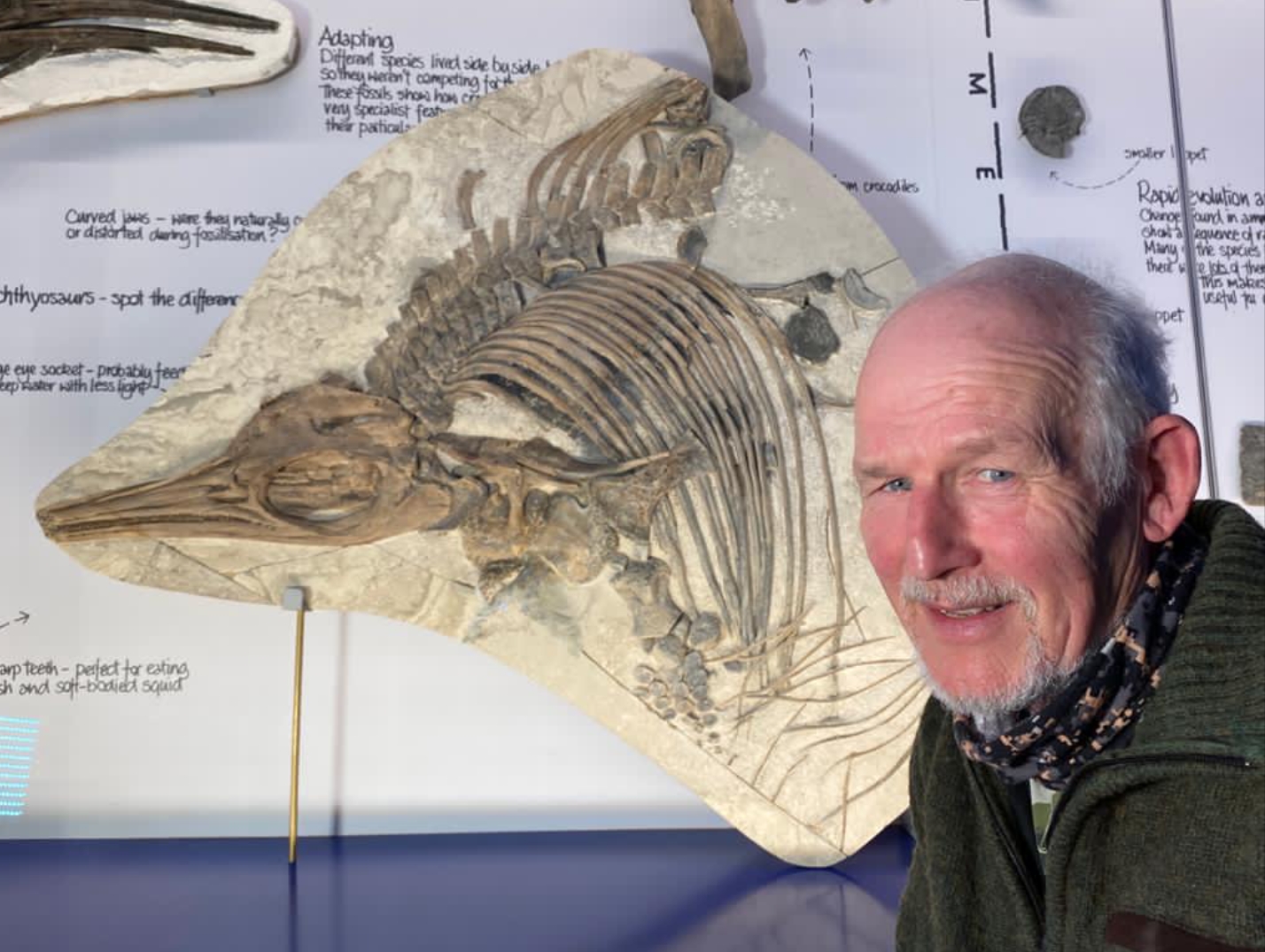The aquatic reptile has been determined to be part of the group known as ichthyosaurs, which were streamlined marine predators from the Late Jurassic period, according to paleontologist Megan L. Jacobs, a Baylor University doctoral candidate in geosciences and co-author of a study published in the journal PLOS ONE.
“This ichthyosaur has several differences that makes it unique enough to be its own genus and species,” Jacobs said. “New Late Jurassic ichthyosaurs in the United Kingdom are extremely rare, as these creatures have been studied for 200 years. We knew it was new almost instantly, but it took about a year to make thorough comparisons with all other Late Jurassic ichthyosaurs to make certain our instincts were correct. It was very exciting to not be able to find a match.”
The specimen, estimated to have been about 6 feet long, was discovered in 2009 by fossil collector Steve Etches, MBE, after a cliff crumbled along the seaside. He found it encased in a slab that would originally have been buried 300 feet deep in a limestone seafloor layer. The fossil since has been housed in The Etches Collection Museum of Jurassic Marine Life in Kimmeridge, Dorset. Jacobs named it Thalassodraco etchesi, meaning “Etches sea dragon,” after Etches.
“Now that the new sea dragon has been officially named, it’s time to investigate its biology,” said study co-author David Martill, Ph.D., professor of paleontology at the University of Portsmouth in Portsmouth, United Kingdom. “There are a number of things that make this animal special.”
Investigating the Differences
“This animal was obviously doing something different compared to other ichthyosaurs. One idea is that it could be a deep diving species, like sperm whales,” Jacobs said. “The extremely deep rib cage may have allowed for larger lungs for holding their breath for extended periods, or it may mean that the internal organs weren’t crushed under the pressure. It also has incredibly large eyes, which means it could see well in low light. That could mean it was diving deep down, where there was no light, or it may have been nocturnal.”
With the deep rib cage, the creature would have looked very barrel-like, she said. Given its comparatively small flippers, it may have swum with a distinctive style from other ichthyosaurs.
The specimen’s hundreds of tiny teeth would have been suited for a diet of squid and small fish, and “the teeth are unique by being completely smooth,” Jacobs said. “All other ichthyosaurs have larger teeth with prominent striated ridges on them, so we knew pretty much straight away this animal was different.”
Changes Through History
Ichthyosaurs originated as lizard-like creatures living on land and slowly evolved into the dolphin/shark-like creature found as fossils. Their limbs evolved into flippers, most of them very long or wide.
“They still had to breathe air at the surface and didn’t have scales,” Jacobs said. “There is hardly anything actually known about the biology of these animals. We can only make assumptions from the fossils we have, but there’s nothing like it around today. Eventually, to adapt to being fully aquatic, they no longer could go up onto land to lay eggs, so they evolved into bearing live young, tail first. There have been skeletons found with babies within the mother and also ones that were actually being born.”
Thalassodraco etchesi is closely related to Nannopterygius, a widespread genus of ichthyosaurs which inhabited Late Jurassic seas across Europe, Russia and the Arctic around 248 million years ago and became extinct around 90 million years ago. The largest ichthyosaurs, found in North America, had skulls nearly 16 feet long.
Jacobs said that the new specimen likely died from old age or attack by predators, then sank to the seafloor.
“The seafloor at the time would have been incredibly soft, even soupy, which allowed it to nose-dive into the mud and be half buried,” she said. “The back end didn’t sink into the mud, so it was left exposed to decay and scavengers, which came along and ate the tail end. Being encased in that limestone layer allowed for exceptional preservation, including some preserved internal organs and ossified ligaments of the vertebral column.”
“It’s excellent that new species of ichthyosaurs are still being discovered, which shows just how diverse these incredible animals were,” Martill said.


